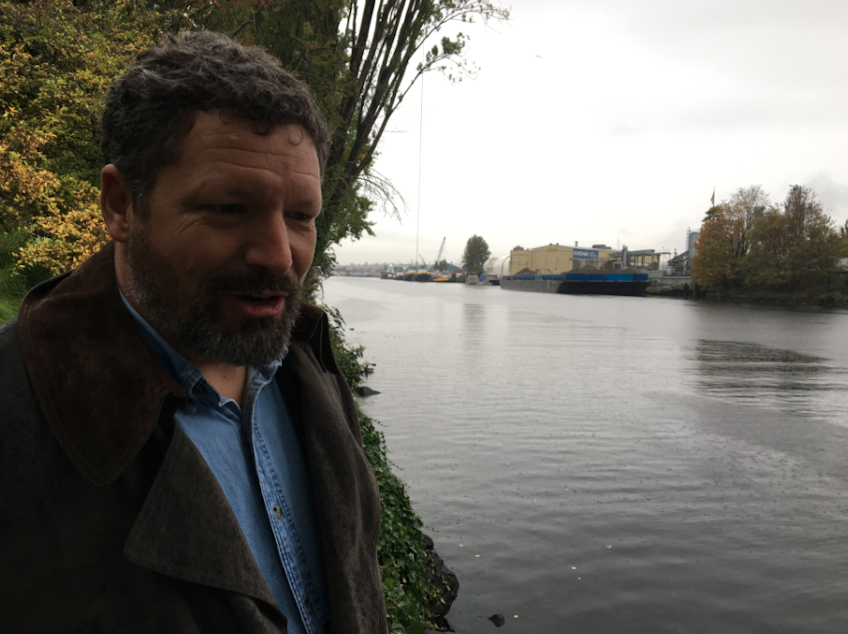Look out, salmon: Storm pushes foul waste into Seattle waters

Wind and heavy rain could make this weekend tough for Puget Sound dwellers.
The storm could be rough on the sound's underwater residents as well.
Big storms mean big water pollution as heavy runoff carries toxic crud into local waters, and as city sewer systems can't keep up.
Along shorelines in Seattle and Puget Sound, outfall pipes dump raw sewage and runoff whenever heavy rains, like those expected this weekend, overwhelm the sewer system.
By Friday morning, 12 of these "combined sewer overflow" pipes had begun dumping an unhealthy mix straight into Seattle waters, according to King County's real-time "combined sewer overflow" monitoring: five outfalls on the Duwamish River, two along the Seattle Ship Canal, two on Portage Bay, one at Carkeek Park, one on Elliott Bay and one in West Seattle.
Sponsored
Thursday afternoon, as a light rain fell on the ship canal, Puget Soundkeeper Alliance director Chris Wilke stood over one of those pipes, on the Queen Anne side of the canal, and described what would be coming out of it in the coming hours.
"It's going to be a mix of raw sewage, what we flush down our toilets and sinks and showers; industrial waste, as well as stormwater going into system through storm drains," Wilke said.
This time of year, coho salmon are swimming up the canal to Lake Washington to spawn in streams above it. Studies by federal fisheries researchers have found that the coho are frequently killed by the stew of toxic substances in stormwater runoff before they are able to spawn.
The pipe beneath Wilke's feet dumped a total of 12 million gallons of untreated, unhealthy water into the ship canal last year, following seven storms, according to King County's Wastewater Treatment Division.
Last year's heavy rainfalls led to 1.5 billion gallons of combined sewer overflow fouling waters across the city -- nearly twice the volume predicted for an average year.
Sponsored
Public health officials warn that you shouldn't swim or fish near these pipes any time it's rained recently.
While last year was worse than the recent average, the amount of untreated filth overflowing into Puget Sound has dropped dramatically over the past half century. The city and county have made major investments in sewage treatment and dozens of projects are under construction to do more around Puget Sound.
Seattle now has four emergency sewage treatment plants that only kick in the wettest weather.
Across the city, 1,000 property owners, mostly homeowners, have voluntarily installed rain gardens and other stormwater absorbing "green infrastructure," according to Seattle Public Utilities.
"Especially as Seattle continues to develop, it's really going to be critical for the sound," Monica Van der Vieren with the county's Wastewater Treatment Division said of attempts to absorb runoff before it runs into Puget Sound or has to be expensively treated.
Sponsored
Under legal agreements with the Environmental Protection Agency, Seattle and King County expect to mostly fix the problem of sewer overflows by the year 2030.
"It's a long process," Sandy Howard with the Washington Department of Ecology said. "It's very costly."
The legal mandate is to have these pipes only discharge untreated sewage once a year, after the biggest storms.
Climate change, expected to bring more-intense rainfall to the region, could make that mandate even more difficult to reach.

